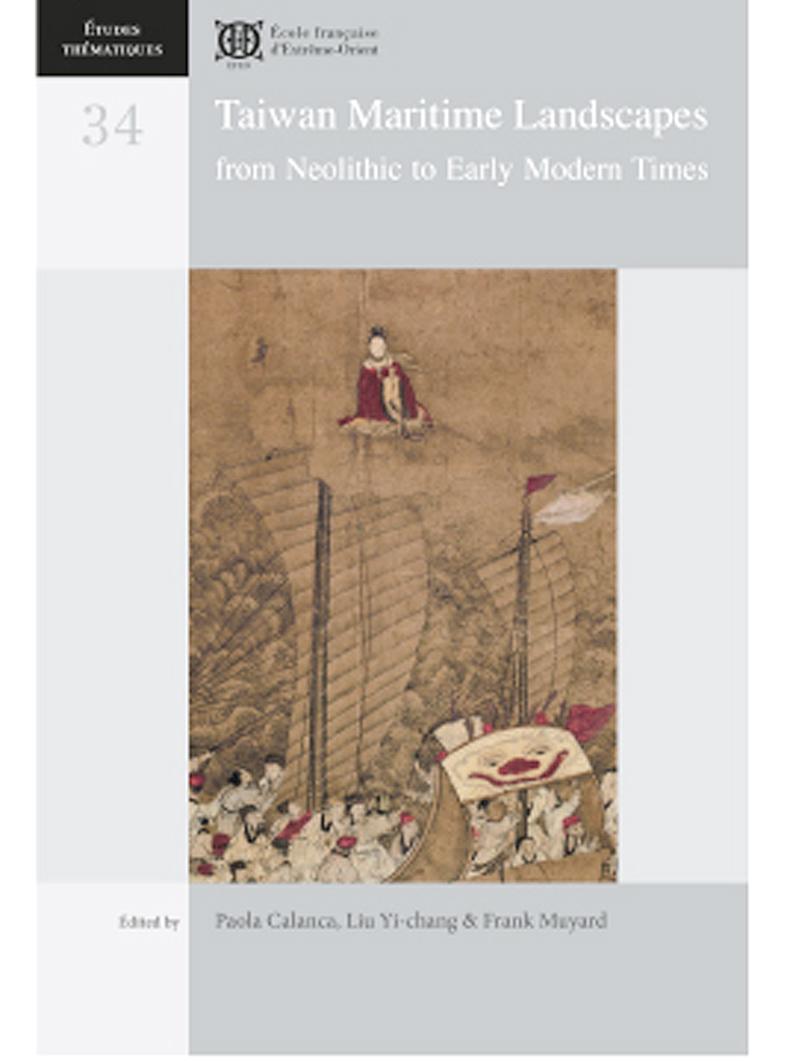Now and then a work appears that ruthlessly exposes the limits of one’s knowledge. Even seasoned students of Taiwan’s history are likely to find this book doing so repeatedly.
Whether speculating on the origins of the Pisheye (毗舍耶) raiders who terrorized coastal Fujian in the twelfth century; quoting from the 1875 memoirs of British Royal Navy Captain Bonham Ward Bax, for whom the Taiwanese were “plunderers … always looking on a wreck as lawful spoil;” or positing trade relations, rather than shared origins, as the source of the mutual intelligibility in the languages of Lanyu (蘭嶼) and the Batanes Islands, each article in this collection is brimful of revelation.
Some material is geared toward the specialist, but most topics are accessible. Even the chapters that are data and graphic-heavy for the average reader — particularly those on archeology and climate — are textually straightforward enough to ensure that reading is seldom a chore. This clarity, concision and engagement of the prose is in part borne of the interdisciplinary nature of the topics.

This is acknowledged in the introduction, where the editors call for “timely synergy among archaeologists and historians” and credit “painstaking multidisciplinary and interdisciplinary work” for helping to fill “the vast historical vacuum in the written sources.”
Fans of similarly polymathic popular science — the works of Jared Diamond or the geneticist Luigi Luca Cavalli-Sforza come to mind — should find this book a treat. Areas of expertise that might normally seem obscure or challenging are communicated with elan. The authors and editorial team must also take immense credit for rendering a work of such serious scholarship so effortlessly enjoyable.
In addition to the articles of a more scientific bent, there are fascinating chapters dedicated to textual sources on Taiwan’s maritime history. These include works in Chinese, English and Spanish, some of which have rarely, if ever, been discussed in English before and certainly not in this context.
Two nautical terms that appear in multiple chapters — but receive their fullest treatment in an essay by Chen Kuo-tong titled “Chinese Knowledge of the Waters around Taiwan” — are luoji (落漈) and wanhsui chaodong (萬水朝東). While both have been used since at least the Yuan Dynasty, a precise meaning for either remains elusive.
Literally translating as “all water leading east,” the latter phrase is generally taken to refer, rather vaguely, to the vast expanses of the Pacific Ocean. However, the location of the former, which indicates some kind of deep trench, is shrouded in mystery.
PLACE OF NO RETURN
Some Yuan sources indicate it is in the vicinity of Penghu or “the Liuqiu (琉球) islands,” while later chroniclers suggest a placement as far south as the Pratas Islands (Dongsha Islands, 東沙島). Wherever exactly it was, the luojii was considered a treacherous place where violent winds and a sudden drop in depth meant that few vessels caught there “would be able to return safely.” Chen speculates that the place or phenomenon in question might be the Kuroshio Current or Black Current (黑潮) that flows northeastward from the Philippines past Taiwan and Japan. Elsewhere, the luoji and the Kuroshio are considered separate entities.
Readers familiar with the exploits of Ming Dynasty admiral Zheng He (鄭和) and China’s burgeoning naval prowess during that period might also be surprised at how little Chinese seafarers appeared to know — or at least log — of the surrounding seas before then.
The gap in reliable records is partly down to the fact the best extant accounts were usually from anomalous early travel writers who had very little knowledge of the intricacies of navigation, rather than professional mariners. Later records, such as those by the literati Yu Yonghe (陏永河), whose Small Sea Diaries (裨海紀遊) is a unique, personal account of Taiwan in the late seventeenth century, are rarely any more trustworthy — at least not on the nautical front.
NAME GAME
Aside from climatological and nautical terminology, even the references to islands and locations were muddled. Some readers will be aware that, apart from being the current name for a small island southwest of Taiwan, Liuqiu is also the Chinese name for the Ryukyu Islands or the main island of the group, Okinawa, and that it has also been used as the name for Taiwan at points in history. More surprising is Chen’s revelation that Japanese samurai Toyotomi Hideyoshi referred to the Philippines as such in correspondence with its Spanish Governor-General.
Other names that appear to have referred to Taiwan were (or may have been) the Isle of Yi (Yizhou, 夷洲), the mythical Penglai Islands (蓬萊仙島) or the Min (閩) region of the southeast Chinese coast that the ancient Classic of Mountains of Seas (山海經) text claimed “lies within the sea.” (NB: This is distinct from the modern Min people and the language group, of which Hokkien-Taiwanese is a variety.)
Thus, Taiwan itself emerges as a nebulous, liminal presence despite, or perhaps because of, the riveting exposition it undergoes in this collection. This need not connote the geopolitical marginalization the country has suffered in contemporary times. Rather, it is a facet of the spirit of inquiry that underpins the work: Like all great science, in casting light on dark corners, it reveals previously unknown passageways to other places that might otherwise have remained off limits.

Sept. 1 to Sept. 7 In 1899, Kozaburo Hirai became the first documented Japanese to wed a Taiwanese under colonial rule. The soldier was partly motivated by the government’s policy of assimilating the Taiwanese population through intermarriage. While his friends and family disapproved and even mocked him, the marriage endured. By 1930, when his story appeared in Tales of Virtuous Deeds in Taiwan, Hirai had settled in his wife’s rural Changhua hometown, farming the land and integrating into local society. Similarly, Aiko Fujii, who married into the prominent Wufeng Lin Family (霧峰林家) in 1927, quickly learned Hoklo (commonly known as Taiwanese) and

The low voter turnout for the referendum on Aug. 23 shows that many Taiwanese are apathetic about nuclear energy, but there are long-term energy stakes involved that the public needs to grasp Taiwan faces an energy trilemma: soaring AI-driven demand, pressure to cut carbon and reliance on fragile fuel imports. But the nuclear referendum on Aug. 23 showed how little this registered with voters, many of whom neither see the long game nor grasp the stakes. Volunteer referendum worker Vivian Chen (陳薇安) put it bluntly: “I’ve seen many people asking what they’re voting for when they arrive to vote. They cast their vote without even doing any research.” Imagine Taiwanese voters invited to a poker table. The bet looked simple — yes or no — yet most never showed. More than two-thirds of those

In the run-up to the referendum on re-opening Pingtung County’s Ma-anshan Nuclear Power Plant last month, the media inundated us with explainers. A favorite factoid of the international media, endlessly recycled, was that Taiwan has no energy reserves for a blockade, thus necessitating re-opening the nuclear plants. As presented by the Chinese-language CommonWealth Magazine, it runs: “According to the US Department of Commerce International Trade Administration, 97.73 percent of Taiwan’s energy is imported, and estimates are that Taiwan has only 11 days of reserves available in the event of a blockade.” This factoid is not an outright lie — that

Former Chinese Nationalist Party (KMT) chairwoman Hung Hsiu-chu’s (洪秀柱) attendance at the Chinese Communist Party’s (CPP) “Chinese People’s War of Resistance Against Japanese Aggression and the World Anti-Fascist War” parade in Beijing is infuriating, embarrassing and insulting to nearly everyone in Taiwan, and Taiwan’s friends and allies. She is also ripping off bandages and pouring salt into old wounds. In the process she managed to tie both the KMT and the Democratic Progressive Party (DPP) into uncomfortable knots. The KMT continues to honor their heroic fighters, who defended China against the invading Japanese Empire, which inflicted unimaginable horrors on the